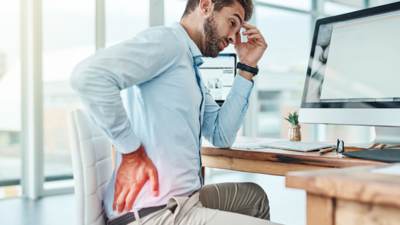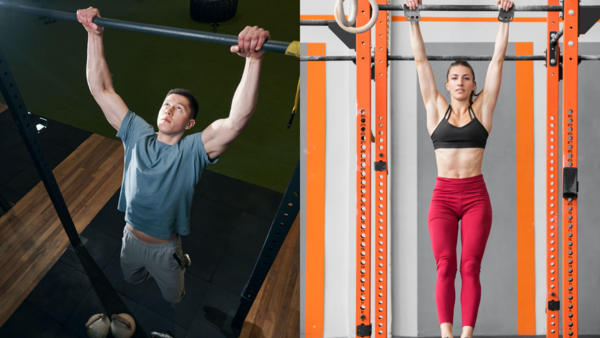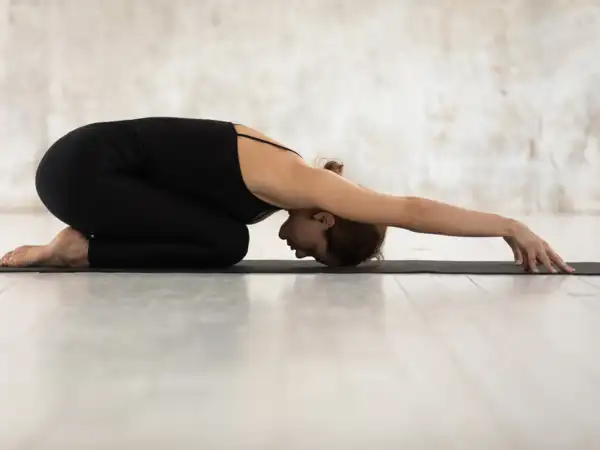ARTICLE AD BOX

It's easy to lose track of time while sitting, whether it’s while working, watching TV, or scrolling on a phone. But medical research is sending out warning bells. Sitting for long hours, especially beyond 4 hours a day, has been quietly linked with a range of health concerns: from back and neck pain to increased chances of chronic diseases and even a shorter lifespan.Most people think it's harmless. “It’s just sitting,” they say. But the truth is far from it. Experts, including those from the World Health Organization (WHO), point out that physical inactivity is now among the leading causes of death globally. It’s not just about being inactive—it’s also about how the body holds itself for hours. Poor posture, tight muscles, and compressed joints can make life harder later.Luckily, certain targeted exercises can reverse a lot of this damage.
The following movements aren't just popular stretches, they're critically chosen to realign posture, wake up the spine, and build back the strength that long sitting silently takes away.
Deadhangs
Hanging from a bar is for athletes or gymnasts. This simple act of hanging can decompress the spine, realign the shoulders, and stretch the upper body deeply.Deadhangs are incredibly underrated. Hanging for just 30 to 60 seconds a few times a day helps reverse spinal compression caused by sitting.
It also opens up the chest, an area that slouches inward with poor posture. This stretch even helps improve grip strength, which is surprisingly linked with better heart health and longer life.

A bar at home, a park jungle gym, or even a sturdy pull-up bar can be a tool for this. No fancy moves needed, just a deep breath and a slow, relaxed hang.
Deadlifts
Deadlifts are only for bodybuilders. Even light deadlifts can activate the body’s most essential muscles for standing tall and pain-free.Deadlifts, when done correctly and with proper form, strengthen the entire posterior chain—the muscles running along the back of the body. Think glutes, hamstrings, back, and core. These are the very muscles that go ‘offline’ during long hours of sitting.What makes deadlifts special is their functional benefit—the kind of strength built here translates directly to daily life. From lifting a child safely to picking up groceries without straining the back, this move builds confidence and resilience in the body.

Come to your knees on the ground and sit on your heels. Let your arms fall forward and place your forehead on the mat. Breathe deeply and hold for 1 to 2 minutes, allowing your body to completely relax.Begin your yoga journey with Times Health+ Yoga.
Child’s pose
It’s just a yoga rest position. Child’s pose is one of the best ways to release tension in the lower back and open up stiff hips.After hours of sitting, the hips and lower back crave gentle lengthening. This stretch gives just that. It relaxes the spine, stretches the shoulders, and helps the breath reach deeper parts of the lungs—something that tends to shrink with hunched posture.Doing this pose daily creates a beautiful ritual of slowing down, listening to the body, and giving it the nourishment it quietly asks for.
Sphinx pose
It's too easy to be effective. This gentle backbend helps restore the natural curve of the spine and counteracts the rounded shape caused by desk sitting.In Sphinx pose, the chest opens up and the lower back receives a gentle arch, two actions that sitting actively prevents. The elbows support the body, so there’s no pressure on the wrists or shoulders. It’s especially helpful for those who feel stiffness in the mid-back or experience tightness near the ribcage.When held for a minute or two daily, this pose promotes circulation in the spine and supports healthy digestion—both of which slow down during long sedentary periods.
20 minute massive calorie burn!
Glute bridges
It’s a basic workout move. This simple lift reactivates the glutes, muscles that weaken first when sitting becomes a habit.Glute bridges are more than just a fitness trend. The glute muscles are key players in posture, lower back support, and even knee alignment.
When they stop firing (a common issue from prolonged sitting), the body compensates by overusing the lower back, which leads to pain.This movement gently reintroduces control and power into the hips. It also teaches the brain to reconnect with muscles that often go numb after long desk-bound days. Over time, the body learns to stand, walk, and sit with more intention and support.



.png)
.png)
.png)
















 17 hours ago
4
17 hours ago
4









 English (US) ·
English (US) ·